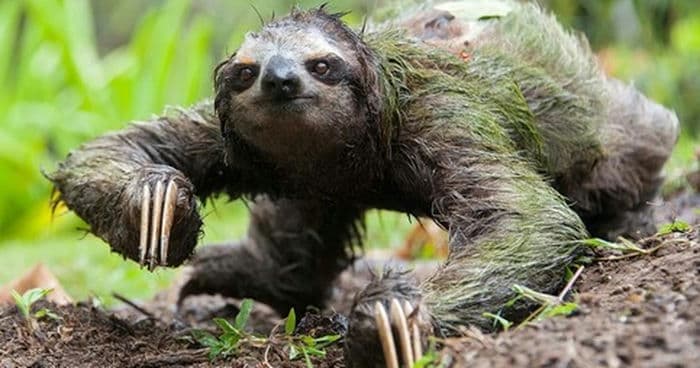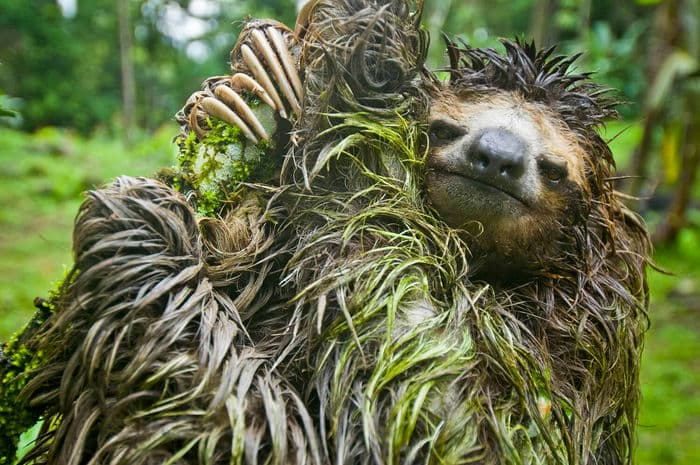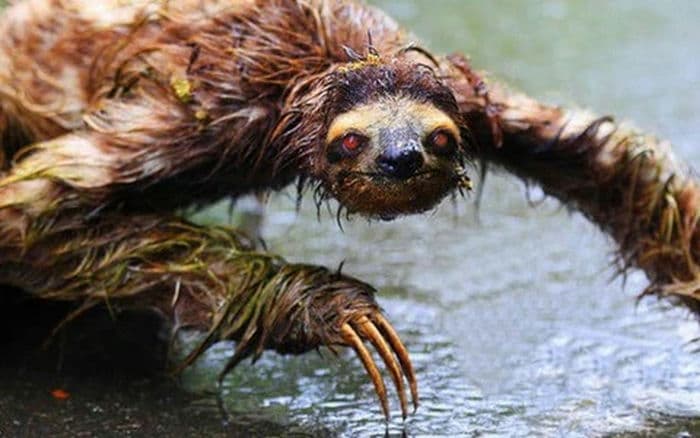Sloths are known for their slow movement, but their lethargy is not the reason for the name humans have given them. Nor is their leisurely pace a sign of weakness.

A common characteristic of sloths is their sluggishness and slow movement, coupled with an appearance that can seem rather “clueless.”
Their indifference to their surroundings leads some to believe they are slow to evolve and lag behind other animal species.

However, this is actually an adaptation to their low-nutrient environment.
Sloths are among the slowest-moving mammals on the planet, with slow-paced habits. This sluggishness is partly due to their poor vision.

Scientific research shows that sloths lost their vision around 60 million years ago. As a result, during the day, a sloth can barely see anything because it’s too bright.
Their slow movement is an evolutionary trait that ensures the safety of these animals. When they can’t see, they must carefully creep forward, feeling their way around to avoid falling from trees.

Moreover, being slow offers many advantages to sloths. First, they save an enormous amount of energy. In fact, sloths use around 90% less energy than the average mammal. This is particularly important since they eat very little, just a few leaves a day.

Moving slowly also helps sloths avoid being detected. Sloths move so slowly that predators like jaguars and eagles, which focus on their prey’s movements, will have difficulty spotting them.
Sloths are unique in their ability to turn their heads 270 degrees due to additional vertebrae in their necks. This allows them to sniff out predators approaching from nearly any direction. This is a particularly useful advantage when they spend almost all their time hanging motionless in trees.
To adapt to these features, after millions of years of evolution, sloth bodies have undergone changes unlike any other species.
Their limbs possess exceptionally strong tendons, and their claws grow into hooked shapes that allow them to easily grip and hang upside down from branches.
The circulatory system of sloths also features a special valve that prevents blood from pooling in their heads—a common occurrence when hanging upside down for too long.
Sloths spend most of their time in trees. They sleep, mate, and even give birth while hanging upside down on branches. They only come down to the ground to “take care of business,” which is when they move at their fastest speed: 160m/hour.
Scientific research shows that around 40-60% of sloths are preyed upon or hit by cars when crossing main roads during this time.
A slow-moving sloth crossing a road in Costa Rica was fortunate to receive help from locals.

Each time a sloth descends from a tree to relieve itself and then climbs back up, it can take the entire day, turning what seems simple for other species into a risky journey for sloths.
To adapt to this, sloths only descend to the ground once a week. Each time they release waste, the sloth’s body weight decreases by around 30%.
Despite their slow movement, sloths have dense fur that becomes a haven for fungi, algae, and insects to nest in after each rainy season. The brown fur turns green and is covered in dry leaves, debris, and insect remains.
However, this does not hinder the lives of sloths; on the contrary, it serves as the perfect camouflage to protect them from predators’ eyes.

